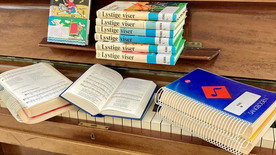
About Resilient Heritage Conservation
A cross-disciplinary group of researchers at the Royal Danish Academy have joined efforts in a multifaceted approach to unite our efforts and ensure a more efficient and sustainable preservation of historic houses and cultural heritage collections in houses, museums, and archives.
The aim is to investigate how buildings, objects and collections in heritage institutions (museums, historic houses, libraries, and archives) are best preserved in a sustainable way with a minimum use of resources.
The group has a general interest in how materials in buildings and objects interact with the ambient climate and how this interaction affects object properties physically and chemically. The goal is to use this knowledge to design and optimize integrated preventive and active conservation solutions.
This approach will ensure production of knowledge aimed for historic houses, museums and archives to make more informed decisions about preventive and active conservation. Through research and education projects and their dissemination, we aim to save energy and conservation resources by making integrated and smarter solutions for collections and render collections, buildings and objects more resilient. The project will work towards smart buildings/collections utilizing computer aided modelling, lab testing, sensors, machine learning, internet of things and integrated big-data management.

The types of studies in focus are:
- Material testing
- Air pollution and emission from materials
- Computational modelling of interactions between objects, buildings, and climate
- Machine learning to predict degradation scenarios or recognize damage types
- Studies of specific museums/archives/collections (e.g. epidemiological studies, surveys, modelling, measuring climate and air pollution)
- The long-term effects of conservation treatments
- Energy consumption in heritage buildings
- Monitoring and remote sensing in heritage buildings/collections












